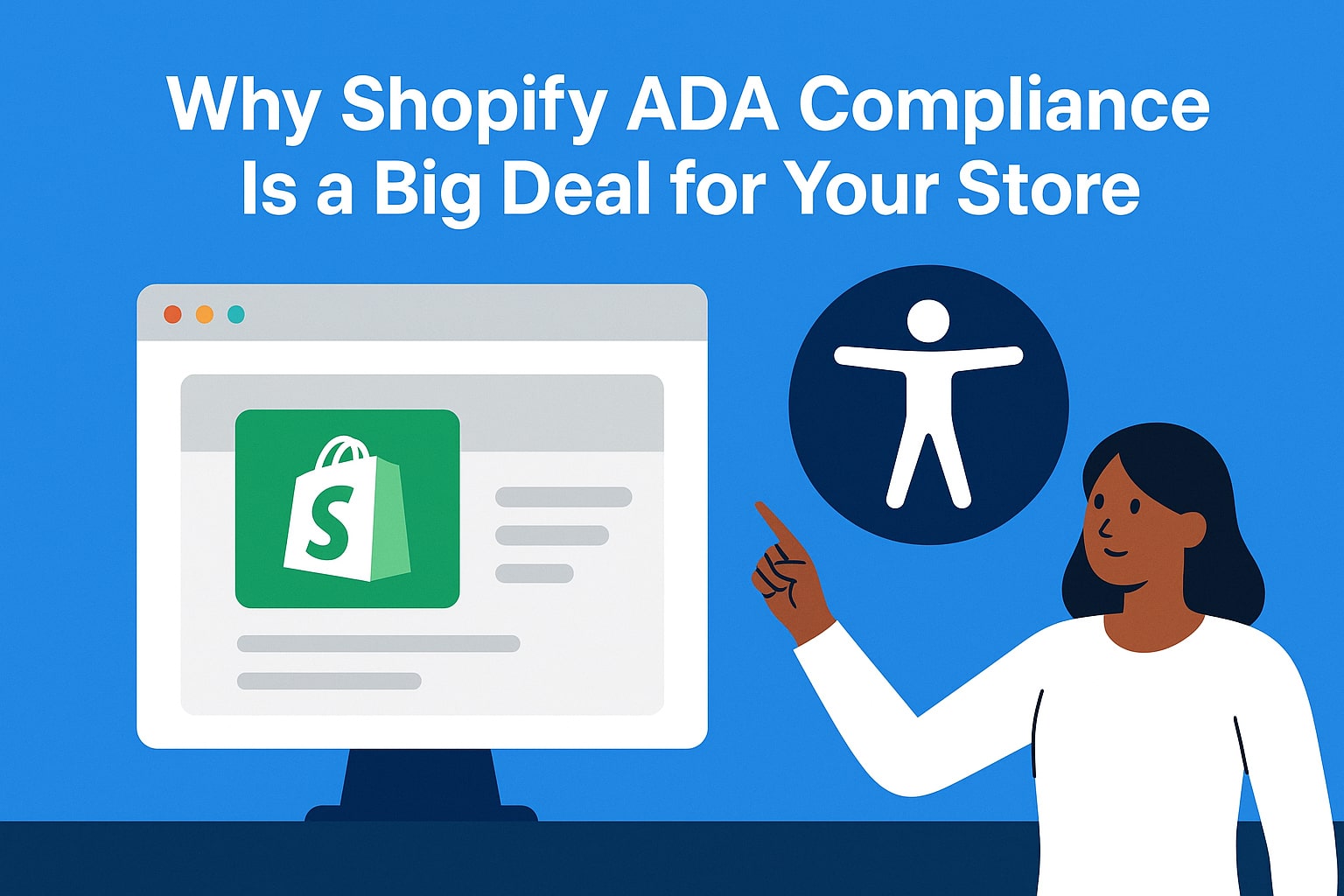
Why Shopify ADA Compliance Is a Big Deal for Your Store
So, let’s get real. If you own a Shopify store, you might be asking yourself: Do I really need to worry about ADA compliance? The short answer: yes. And not just for moral reasons – because accessibility is the right thing to do – but also because failing to make your store accessible can land you in legal trouble. In fact, there’s a growing wave of lawsuits targeting Shopify stores that aren’t ADA compliant. People with disabilities aren’t just an overlooked audience; they’re about 20% of the U.S. population. Consequently, if your website isn’t friendly for them, you’re missing out on customers and opening the door for lawyers to knock. In our previous articles, we’ve explored different aspects of Shopify – from social media integrations to the must-have apps every store owner needs in 2025. Today, we’re shifting focus to an equally important topic: ADA compliance Shopify. In this article, we’ll break down why ADA compliance on Shopify matters and how it can make a big difference for your store.
What ADA Compliance Means
ADA stands for the Americans with Disabilities Act. When we talk about ADA compliance Shopify, it means making sure your store works for everyone – including people using screen readers, keyboard navigation, or other assistive tools.
Shopify accessibility is the bigger picture: it’s all the little things that make your site usable for everyone. Good accessibility means your images, videos, forms, navigation, and even checkout are easy to interact with, no matter someone’s abilities.
Here’s the catch: Shopify is great, but just having a Shopify store doesn’t magically make it ADA compliant. Your theme, your content, and any customizations all impact accessibility. Even a small oversight, like missing alt text on an image or low contrast on a button, can cause problems – and potentially a lawsuit.
Why Businesses Are Getting Sued
You might think: “Come on, isn’t Shopify accessible by default?” Not really. Most lawsuits come from simple, fixable issues, such as:
- Images without alt text
- Forms that aren’t labeled correctly
- Videos without captions
- Poor keyboard navigation
- Low-contrast text
Plaintiff lawyers are scanning the web for these exact things. And when they find them – a legal notice lands in your inbox.
The good news: most accessibility issues are fixable. The bad news: if you ignore them, you could be facing thousands of dollars in legal fees or settlements.
Themes and Apps: Helpful, But Not Enough
Your theme matters. A well-coded theme reduces accessibility headaches. Shopify’s free themes, like Dawn, are a good starting point, but even these need tweaks once you start customizing.
While apps and widgets like Accessibly, UserWay, and accessiBe offer automated solutions and user tools, they aren’t a substitute for thorough accessibility practices. In fact, some overlays could even raise legal issues if they’re viewed as quick fixes.
If you want real ADA compliance Shopify, you need a full audit and code-level work. Apps are helpers, not replacements.
How Digital Octane Helps You Stay Safe
Here’s where we come in. At Digital Octane, we offer a free, detailed ADA report for your Shopify store. It shows:
- All accessibility errors we found
- Prioritized fixes to reduce legal risk
- Recommendations for improving Shopify accessibility
- Guidance on what to tackle first
Think of it as a roadmap. You’ll see exactly what’s wrong, how to fix it, and what issues could actually trigger lawsuits.
A Simple Roadmap to Start
Here’s a suggested phased approach for Shopify store owners working toward full ADA compliance Shopify:
Phase 1: Quick Wins
- Run an audit or get our free report
- Fix easy things: alt text, color contrast, labeled forms
- Add an accessibility statement
- Install a helpful accessibility widget
Phase 2: Deep Fixes
- Keyboard navigation, ARIA roles, responsive checks
- Test with screen readers and real users
- Update content with accessibility in mind
Phase 3: Keep It Up
- Re-run audits monthly or quarterly
- Test new products and content
- Track user feedback
- Maintain documentation – it’s a good legal safeguard
Conclusion
Accessibility goes beyond just following the rules. In addition, it involves reaching a wider audience, making the user experience better, and showing that you value all customers. Therefore, when you focus on ADA compliance Shopify and Shopify accessibility, you’re protecting your business, your customers, and your reputation.
You can get started today with our free Digital Octane ADA report. This report will show you your site’s current accessibility status, what needs to be fixed, and how to make your store more inclusive. As a result, you can address any issues before they cause issues.
You may also like

In-House vs. Outsourced App Development: Which One Is Right for You?
Launching an app can be one of the most exciting – and daunting- steps for a startup. A frequent question among founders is whether to build a team internally, or to rely on outsourced app development? Both options have pros and cons, and the right choice depends on your budget, timeline, and growth strategy. In…

Build Smart, Not Big: How MVP Development Services Help Startups Grow Wisely
Your startup idea feels like it could change the world – but let’s be honest, ideas alone don’t pay the bills. You’ve got limited time, a tight budget, and a dozen things pulling you in different directions. The last thing you want is to spend months (and thousands of dollars) building something nobody needs. That’s…

Website Development for Startups: Choosing the Right Platform for Growth
Your startup idea is ready to take off – but without a solid online presence, your audience might never find you. With millions of websites out there, building one without a plan can waste time, money, and energy. Smart website development for startups isn’t just about coding – it’s about building a platform that grows…

